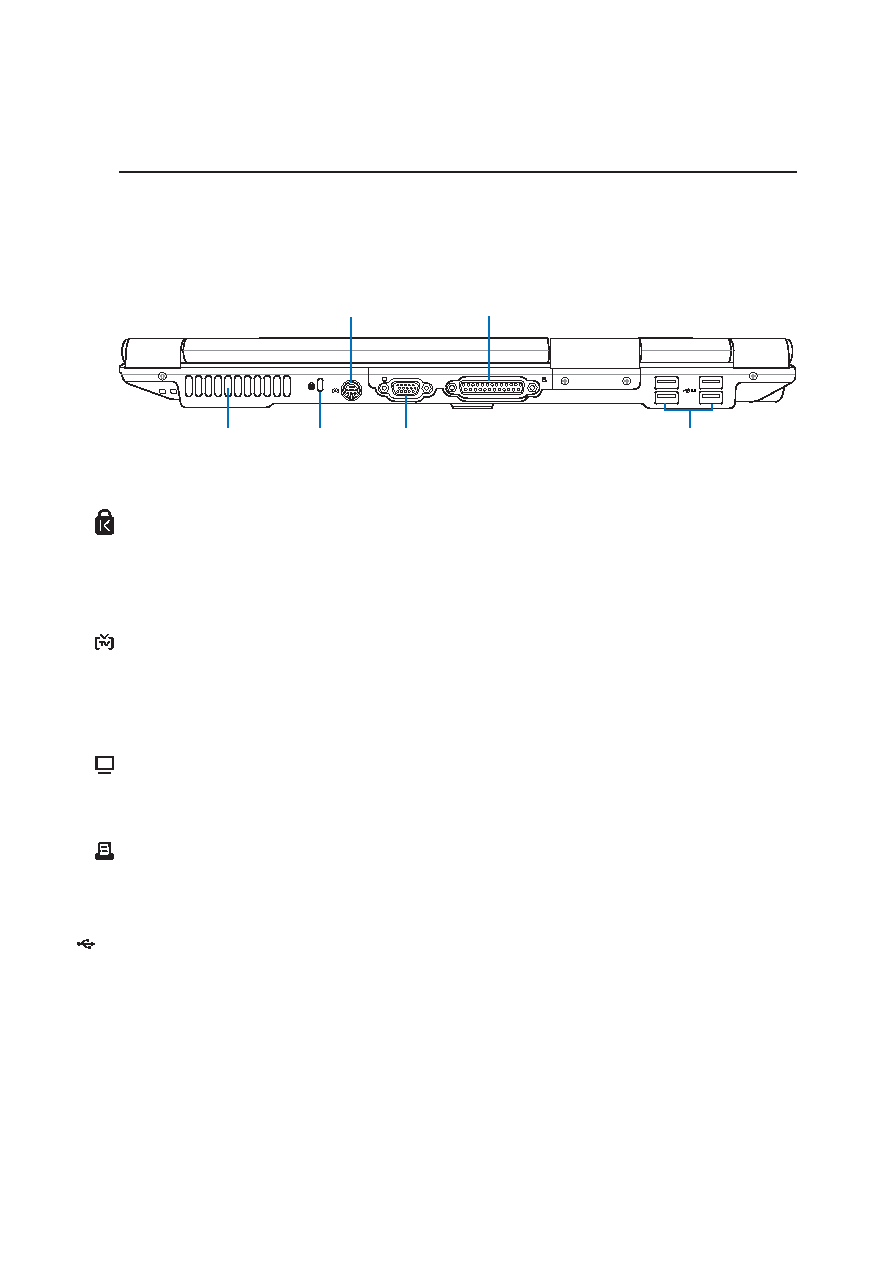
19
Knowing the Parts
2
Display (Monitor) Output
The 15-pin D-sub monitor port supports a standard VGA-compatible device such as a monitor or projector
to allow viewing on a larger external display.
Rear Side
Refer to the diagram below to identify the components on this side of the Notebook PC.
Cooling Fan
and Air Vents
Display
Output
USB
Ports
TV-Out Port
Kensington®
Lock Port
Parallel Port
Kensington® Lock Port
The Kensington® lock port allows the Notebook PC to be secured using Kensington® compatible
Notebook PC security products. These security products usually include a metal cable and lock that
prevent the Notebook PC to be removed from a fixed object. Some security products may also include
a motion detector to sound an alarm when moved.
TV-Out Port
The TV-Out port is an S-Video connector that allows routing the Notebook PC’s display to a television
or video projection device. You can choose between simultaneouly or single display. Use an S-Video
cable (not provided) for high quality displays or use the provided RCA to S-Video adapter for standard
video devices. This port supports both NTSC and PAL formats.
2.0
USB Port (2.0/1.1)
The Universal Serial Bus is compatible with USB 2.0 or USB 1.1 devices such as keyboards, pointing
devices, video cameras, modems, hard disk drives, printers, monitors, and scanners connected in a
series up to 12Mbits/sec (USB 1.1) and 480Mbits/sec (USB 2.0). USB allows many devices to run
simultaneously on a single computer, with peripherals such as USB keyboards and some newer monitors
acting as additional plug-in sites or hubs. USB supports hot-swapping of devices so that peripherals can
be connected or disconnected without restarting the computer.
Parallel Port
The 25-pin D-sub parallel/printer port supports native parallel devices such as laser/inkjet printers, or
parallel-adapted device such as external hard drives, removable drives, or scanners.

